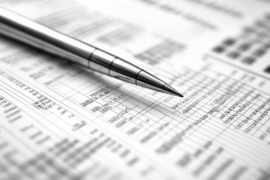This article may contain references to products or services from one or more of our advertisers or partners. We may receive compensation when you click on links to those products or services. Nonetheless, our opinions are our own.
- Key Highlights
- Introduction
- Understanding Your Paycheck and Financial Goals
- Breakdown of a Typical Paycheck
- Setting Realistic Financial Goals
- Beginner’s Guide to Saving Money from Your Paycheck
- Essential Tools and Resources Needed
- Step-by-Step Guide to Allocating Funds
- Strategic Methods to Enhance Your Savings
- Automating Your Savings
- Cutting Unnecessary Expenses
- Conclusion
- Frequently Asked Questions
- Recommended Reads
Key Highlights
- Setting aside 20% of your paycheck for savings obeys the 50-30-20 rule. This practice helps you feel secure and balanced with your money.
- A simple summary of your paycheck shows your take-home pay, taxes, and deductions. This way, you can see how much you can save.
- Making smart savings goals, like saving for emergencies or for retirement, builds a strong money base.
- Automating your savings and cutting back on extra costs makes saving easier and helps you save more.
- Looking at monthly costs and using budgeting tools helps you manage your money well.
Introduction
Achieving financial security starts with saving a portion of your net income each month. How much should you save from each paycheck? Money experts usually suggest the 50-30-20 rule. This strategy means allocating 50% of your income for necessities, 30% for personal spending, and 20% for saving.
By understanding your paycheck and setting savings goals, such as for retirement and emergency funds, you can develop better money habits. Such habits will help you secure a stronger financial future.
Understanding Your Paycheck and Financial Goals
Your paycheck shows how much money you earn after deductions like taxes, insurance, and retirement savings. Understanding these deductions can help you control your net income and determine how to save more effectively. Your gross pay is typically higher than your take-home pay, making it essential to review your paycheck carefully.
Why is this important?
Knowing your income helps you set more realistic money goals. Whether you are building an emergency fund or saving for retirement, aligning your priorities with your income will keep your finances secure in the long run.
Next, let’s break down the structure of a typical paycheck to identify ways to save more effectively.
Breakdown of a Typical Paycheck
Each component of a paycheck influences how much you can save. Deductions can include taxes, retirement payments, and healthcare fees. These deductions lower your net income, which is the amount you take home.
Tax withholdings can change based on federal and state rules and can make up a significant portion of your pay. For example, Social Security and Medicare typically take 7.65%. Federal income tax rates also vary depending on your income level.
Here’s a breakdown for clarity:
| Component | Details |
|---|---|
| Gross Income | The total earnings are before any deductions. |
| Tax Withholdings | This includes federal income tax, Social Security, Medicare, and state/local taxes. |
| Paycheck Deductions | There are contributions to retirement plans, healthcare premiums, and optional benefits. |
| Net Income | Your take-home pay is the remaining income after all deductions. |
Understanding these deductions helps you identify areas where you can make changes to save more money.
Setting Realistic Financial Goals
Setting financial goals begins by determining what you want to achieve. These goals can be short-term needs or long-term aspirations. A good emergency fund should cover your living expenses for 3 to 6 months, helping you stay secure during unexpected situations.
Saving for retirement is also crucial. Retirement plans like IRAs and 401(k)s help your money grow over time. Consistently contributing to these accounts will ensure you stay on track and feel more confident about your future.
Other goals may include saving for a car, paying for education, or planning a vacation. By setting realistic goals that align with your income and budgeting wisely, you can manage your daily expenses while focusing on what’s important to you.
Beginner’s Guide to Saving Money from Your Paycheck
Saving money is achievable, even for beginners, if you follow simple steps. Start by setting aside a small portion of your paycheck into a savings account.
Set up automatic transfers to prevent spending the extra money. Over time, these small actions will become regular habits, helping you maintain stability with your finances.
Let’s explore some tools that can assist in your savings journey.
Essential Tools and Resources Needed
Modern tools can make saving easier. Budgeting apps, such as Mint or You Need a Budget (YNAB), assist in tracking your monthly spending and identifying areas where you can make improvements. These tools monitor your habits and support your money goals.
Apps like Acorns or Rocket Money round up your daily purchases and automatically save the extra change. For instance, if you buy a coffee for $3.50, the app will round it up to $4 and save the extra $0.50. These small actions add up over time.
High-yield savings accounts are a wonderful option. They offer better interest rates than regular savings accounts, helping you maximize your savings. By combining these tools, your budget will stay on track, and your savings will grow.
Step-by-Step Guide to Allocating Funds
The 50-30-20 budgeting rule is a well-known method for managing income and savings. It divides your income into three categories:
- Savings (20%): Allocate this portion to your emergency fund, retirement plans, or other savings goals.
- Essential Needs (50%): Use this for necessities such as rent, utilities, groceries, and transportation.
- Discretionary Spending (30%): Spend this on non-essentials like eating out, entertainment, and hobbies.
Start by focusing on building your emergency fund. Then, move on to long-term savings goals or large purchases. Planning early and saving consistently will help you feel more financially secure.
Step 1: Analyze Your Monthly Expenses
Understanding your monthly spending is key to setting up a successful budget. Begin by listing all your regular bills, such as housing, utilities, groceries, and transportation. Then, assess your discretionary spending, including dining out, subscriptions, and entertainment.
Identify fixed expenses, such as rent and insurance, and variable costs, like dining out and gas. Afterward, evaluate where you can cut costs. For instance, canceling unused subscriptions or reducing dining-out expenses can save you a significant amount.
Regularly reviewing your spending ensures your budget aligns with your financial goals, helping you save more efficiently.
Step 2: Determine the Percentage to Save
The amount you save should reflect your financial situation. Many experts recommend saving at least 20% of your take-home pay. You can adjust this percentage based on your expenses and goals, drawing inspiration from the 50-30-20 rule.
Here are some tips:
- Focus on saving for emergencies and retirement as your top priorities.
- Use any extra income, such as bonuses or side earnings, to increase savings or invest.
- For example, if you earn $2,000 a month, saving 20% means putting aside $400 each month.
- Adjust your savings rate as necessary, especially during periods of high expenses or financial uncertainty.
Flexibility is key. Start with what you can afford and gradually increase your savings over time. Now, let’s explore effective strategies to help you save consistently.
Strategic Methods to Enhance Your Savings
Improving your savings requires more than just cutting expenses—it’s also about working smarter. Start by automating your savings to ensure consistency. This method eliminates the need to manually save each paycheck, reducing the temptation to spend.
Cutting down on unnecessary spending can also boost your savings. Redirecting funds from impulse purchases or unused subscriptions into savings can provide quick results and establish lasting habits.
Treat saving like a daily habit. A well-structured plan makes budgeting easier and more effective.
Automating Your Savings
Automation makes saving simpler and more reliable. By setting up automatic transfers, a portion of your paycheck can be directed into a savings or investment account right after you receive it.
Many banks and apps offer automation tools to meet your needs. For example, you can set up an automatic transfer to save 10% for retirement. High-interest savings accounts are also ideal for automated deposits, ensuring your money grows more efficiently.
Scheduling transfers according to your pay cycle helps maintain consistency, ensuring you never miss a contribution. Over time, this automation fosters healthy financial habits and enhances financial stability.
Cutting Unnecessary Expenses
Reducing unnecessary expenses can help you save more money. Start by reviewing your spending on subscriptions, dining out, and impulse purchases.
Cancel memberships you no longer use and explore free alternatives. Evaluate essential expenses like rent and utilities to see if cheaper options are available. Negotiating with your landlord or switching service providers may lower your monthly costs.
Create a budget that emphasizes what’s truly necessary while cutting back on non-essential items. Redirect the saved money into your savings, strengthening your financial security in the long run.
Conclusion
Building financial security begins with understanding how much to save from each paycheck. By setting clear goals, analyzing your monthly expenses, and finding an appropriate savings rate, you can make steady progress toward financial stability.
Automating your savings and eliminating unnecessary expenses will streamline the process. Small, consistent savings can result in substantial growth over time. Building this habit ensures long-term financial protection and helps you achieve your life goals.
Frequently Asked Questions
How much should I save if I earn $2,000 a month?
It is advisable to save 20% of your monthly income. If you make $2,000, this means saving $400 each month. Adjust this amount if your costs or needs change. Consider placing your savings in a high-yield account to maximize returns.
What if I can’t save 20% of my paycheck?
If saving 20% is too much, start with a smaller, regular amount. Prioritize saving over non-essential expenses. Consider using budgeting methods to identify areas where you can save. The key is to save consistently, no matter the amount, so it becomes a habit over time.
Should I prioritize paying off debt or saving money?
Both are important, but it depends on your situation. If you have high-interest debt (like credit cards), prioritize paying that down while contributing a small amount to savings. If your debt has low interest (like student loans), you can balance both by saving regularly and making consistent loan payments.
How do I stay motivated to save regularly?
Set clear, achievable goals and track your progress. Use visual tools like charts or budgeting apps to see your savings grow. Reward yourself for milestones, and remind yourself of the long-term benefits—like financial freedom and reduced stress.

Reviewed and edited by Albert Fang.
See a typo or want to suggest an edit/revision to the content? Use the comment form below for feedback.
At FangWallet, we value editorial integrity and open collaboration in curating quality content for readers to enjoy. Much appreciated for the assist.
Did you like our article and find it insightful? We encourage sharing the article link with family and friends to benefit as well - better yet, sharing on social media. Thank you for the support! 🍉
Article Title: How Much Should You Save from Each Paycheck to Build Financial Security?
https://fangwallet.com/2025/05/15/save-from-each-paycheck/The FangWallet Promise
FangWallet is an editorially independent resource - founded on breaking down challenging financial concepts for anyone to understand since 2014. While we adhere to editorial integrity, note that this post may contain references to products from our partners.
The FangWallet promise is always to have your best interest in mind and be transparent and honest about the financial picture.
Become an Insider

Subscribe to get a free daily budget planner printable to help get your money on track!
Make passive money the right way. No spam.
Editorial Disclaimer: The editorial content on this page is not provided by any of the companies mentioned. The opinions expressed here are the author's alone.
The content of this website is for informational purposes only and does not represent investment advice, or an offer or solicitation to buy or sell any security, investment, or product. Investors are encouraged to do their own due diligence, and, if necessary, consult professional advising before making any investment decisions. Investing involves a high degree of risk, and financial losses may occur including the potential loss of principal.
Source Citation References:
+ Inspo
There are no additional citations or references to note for this article at this time.












































